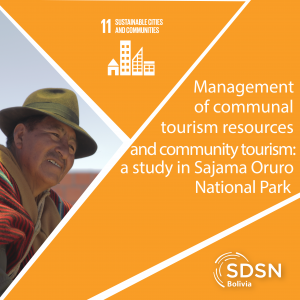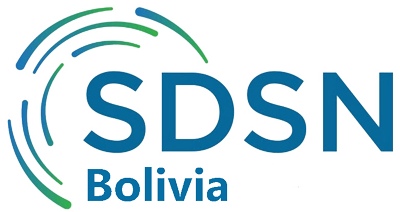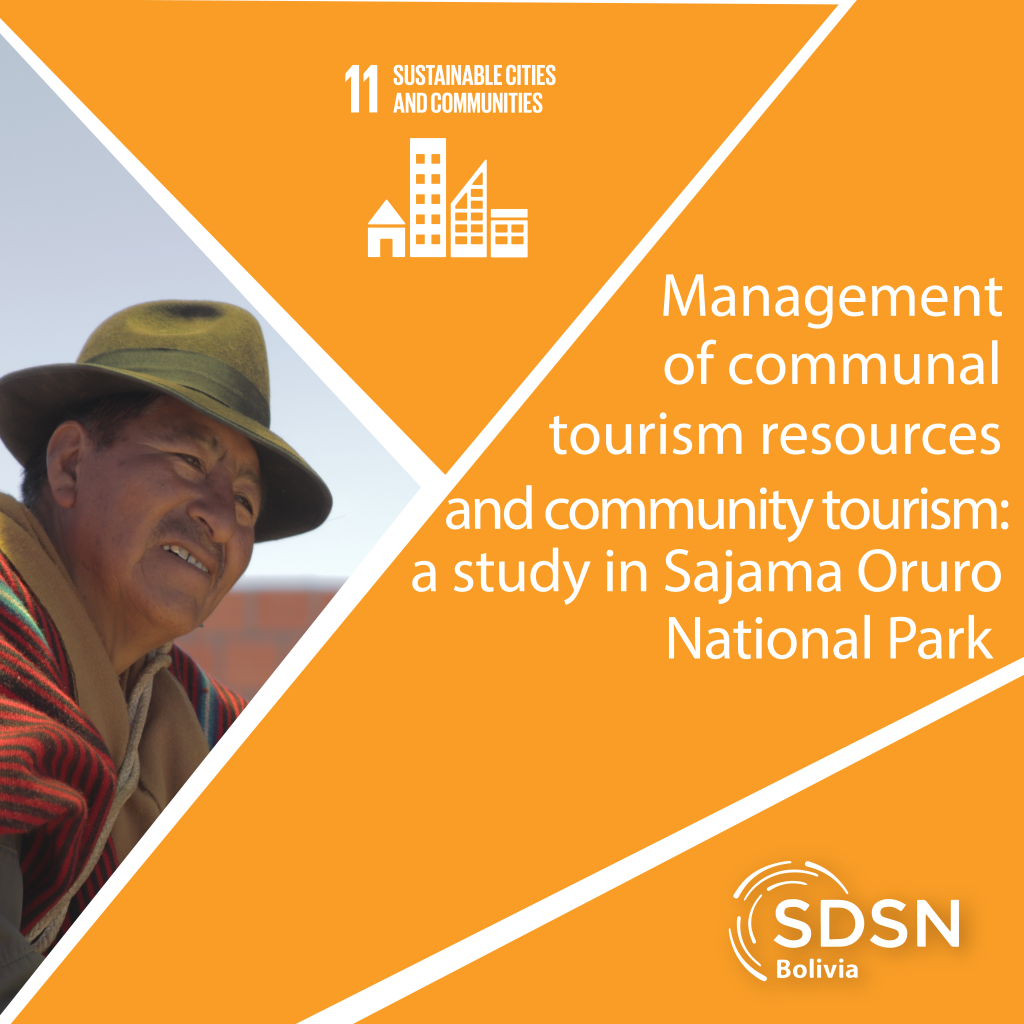
By: Omar Choque
July 25th, 2023
Community tourism has become globally relevant due to the economic, environmental, and sociocultural benefits it offers. It stands out as an alternative to development in rural zones, in comparison to conventional tourism (Canabilla, 2018). In Bolivia, community tourism plays a strategic role in the economy by taking advantage of, rescuing, conserving and strengthening the natural and cultural patrimony of Bolivia (Tourism and Culture Ministry, 2015).
Despite the leading role tourism has gained in international and national programs, it is still limited in Bolivia. The sustainability of the tourist companies is threatened by poor self-management and organization. During recent decades, despite the external support from international partners, non-government organizations, and the government, there are few projects on community tourism that have achieved sustainability (Vice Ministry of Tourism, 2013). The dependency on financing and technical assistance has limited the benefits that the communities can get, and the lack of ability to self-manage has become one of the most significant threats that the tourism sector faces.
The objective of this investigation is to analyze the necessary processes for the design and the institutionality that encourage the self-management and organization of the community tourism companies in Sajama National Park.
This study has a qualitative focus, with a non-experimental and transversal design (Hernández, Fernández, & Baptista, 2014). They carried out semi-structured interviews with the employees of Sajama National Park, indigenous authorities and company partners of community tourism in the Lagunas, Sajama, Manasaya, and Caripe of Sajama National Park communities [1].
RESULTS
The institutionality [2] can be evaluated by the institution’s robustness. They are classified as robust, fragile, or failed (Ostrom, 2000). Their differences reside in their ability to maintain an organization and sustainable management in the use of communal resources for tourism [3]. While the institutions with robust institutionality are resilient, effective and efficient, the fragile institutions present difficulties, and the unsuccessful ones are not effective or resilient.
Figure 1 shows the four community tourism companies in Sajama National Park that were evaluated in terms of their robustness regarding self-management and organization. To carry out this evaluation, they considered eight long-term design characteristics of institutionality [4].
Figure 1. Institutional robustness of community tourism companies in Sajama National Park

Source: authors’ calculations
Entrepreneurship 1: Lagunas Community. The community of Lagunas has a low level of institutionality. They did not have a collective agreement regarding the use of communal resources for tourism [5] (Collective Choice Agreements (CCA)). Because of the absence of rules, there was no supervisor responsible for the fulfillment of these rules (Monitoring, (M)), which makes the implementation of gradual sanctions (GS) impossible. At the moment, they do not have an association or community tourism company, despite the attempts made by the National Program of Community Tourism (NPCT) and the Project Management of Protected Areas and Buffer Zones (MAPZA) – Biodiversity Program and Protected Areas (BIAP). On the other hand, they identified the lack of clarity in the use of communal resources for tourism, such as the case of the tourist interpretation center that is found in the National Park, whose use does not depend completely on the community (Well-Defined Borders (WDB)). This community has not established the Collective Choice Agreements, Monitoring, Gradual Sanctions, Well-Defined Borders, or the balance between the costs and benefits (CaB). Thus, there is no reason to use mechanisms for conflict-resolution (MCR). However, they organized as a community to be part of the Project Management of Protected Areas and Buffer Zones (MAPZA) – Biodiversity Program and Protected Areas (BIAP) and the National Program of Community Tourism (NPCT).
Entrepreneurship 2: Tata Sajama Association. The community of Sajama has a fragile level of institutionality. Their rules for the use of communal resources for tourism [6] have weakened over time. In 2007, they founded the Association of Community Tourism. However, before this year the community had already organized to bring in tourist services, especially for climbing and mountaineering. In 1997, aid from the Spanish government helped construct the New Center of Tourist Attention (NCTA), and in 2015 it was improved by the National Program of Community Tourism (NPCT). The partners in charge of the New Center of Tourist Attention (NCTA) maintenance and other communes such as the Sajama Nevado, also offer tourist services. This results in less individual effort as the benefits are divided amongst a large group of people. Sanctions should start with an initial warning, followed by a penalty related to the profits generated by the New Center of Tourist Attention (NCTA). However, due to the low level of profits, these sanctions cannot be accomplished properly (SG).
The association has a board with a president and a secretary. Its interests, like those of many other members, center on independent tourism businesses, especially in the provision of lodgings. This leads them to prefer to earn income directly and individually, instead of via a communal association (WDB). They documented low economic benefits from the communal association and high benefits for working independently (CaB). The association meets annually to pay accounts and to change the board members. However, they have not managed to establish new rules for the exploitation of the communal resources for tourism, nor have they complied with existing rules (MCR). Although the recognition of the association has been taken advantage of, especially in the NPCT project, the benefits of this project were minimal (RMDO).
Entrepreneurship 3: Huayna Sajama Association. The Manasaya community has a robust institutionality. They identified rules for the use of communal resources for tourism [7], with certain weaknesses in their resilience. In 2019, they created the association of community tourism with the MAPZA/BIAP project, and they constructed the Manasaya Thermal Complex (MTC), which was improved by the NPCT in 2015 (CCA). The business partners responsible for monitoring in the Manasaya Thermal Complex (MTC) use a rotational system where two partners monitor the MTC for 15 days. During each 15-day period, the partners are responsible for supervising the service and ensuring the cleanliness of the pools, among other responsibilities (M). In case of a breach in duties, whether it is because of insufficient cleaning of the pools or other reasons, they apply sanctions that start as a warning and end as a suspension of shift, which translates to an economic loss (SG). The association has a permanent legal representative, although it lacks a general manager. In the absence of a general manager, these responsibilities are borne by the highest original authority. In the past, there were other roles such as general manager, pool cleaners, and tourist guides, but these jobs no longer exist. The activities of the entrepreneurship are focused on MTC, leaving aside other communities such as Lagunas and Nevado. (WDB).
The association meets annually to pay accounts although they also have biweekly meetings to change shifts, pay accounts, and clean the pools. They have conflict-resolution spaces, but they do not establish mechanisms to improve the use of communal resources for tourism (MCR). An equilibrium between costs and benefits was achieved, the remuneration is of approximately 750 Bolivianos per shift, with an annual income of approximately 100 USD. These incentives act as a motivation so the partners comply with and maintain the established rules (CaB). Finally, it is evident that they took advantage of the recognition of the association for the MAPZA/BIAP projects and NPCT.
Entrepreneurship 4: Society of Suni Uta Choquemarka – Tomarapi Tourism. The Caripe community has robust institutionality. They identified rules for the use of resilient communal resources for tourism [8]. In 2001, they created the Society of Community Tourism, and constructed the Tomparai Tourism Lodge (TTL), with support from MAPZA/BIAP, which was extended in 2013 with the National Program of Community Tourism (NPCT). The partners that work with TTL rotate shifts each month, with four partners per shift. During these shifts, the partners take care of the payments, cleaning, and food service, among others. Additionally, there exists an annual monitoring of the general manager, the administration and the legal representative (M). In case of a breach of these rules, they apply sanctions that start with a warning and end with a suspension of shift and loss of benefits (SG).
The association has a general manager that is the highest original authority, an administrator, both employed full-time, and a legal representative. In the past, the administration of the lodge was external. However, they made the decision to look for a local administrator in order to improve the business’ profits. Initially, they established an agreement with the local travel agency to commercialize the tourism activities. However, the business currently does it independently (WDB).
There is an equilibrium between the costs and benefits of the business. The benefits are approximately 2,000 Bolivianos a month per partner, as well as an average annual benefit of 200 USD. These incentives motivate the partners to maintain and comply with the established rules. The business also contributes to the development of the community through investments in infrastructure of roads or schools, among others (CaB). Likewise, there is an annual meeting to pay accounts, where they evaluate the performance of the business. There are also monthly meetings to change shifts and to assess the performance of the business. There are also emergency meetings approximately four times a year (MCR). They took advantage of the recognition of the association for the MAPZA/BIAP projects and NPCT, as well as others (RMDO).
In all the communities, they identified a weakness in the co-management of the communal resources for tourism shared between communities, including Sajama National Park. This lack of co-management negatively affects the coordination of the tourism circuit and the offering of products at the destination (EA).
FINAL COMMENTS
Based on the results, they can confirm that the design of robust institutionality is fundamental to achieve self-management and organization in community tourism companies.
When the users of a tourism resource establish their own rules (AEC), which are applied by local users or by people accountable to the local users (M), using gradual sanctions (SG), that clearly define who has the right to use a specific resource (WDB), and that assign proportional costs to the benefits (CaB). The problems of action and collective vigilance tend to resolve themselves in an effective manner. Additionally, promoting and strengthening the dynamic resolution to problems on different levels contributes to the sustainability of entrepreneurship (MRD). The community organization is key for taking advantage of international support and national programs to encourage community tourism (RMDO). Finally, in a tourist destination, the co-management of communal resources for tourism within the communities, government authorities and private authorities[are essential (EA).
Footnotes
[1] They chose Sajama National Park for the diversity of tourism companies that allows for the investigation of their levels of self-management and organization.
[2] The institutions have rules, norms and practices that govern human behavior in a society or social group. They can be formal (such as laws, constitutions or regulations) or informal (such as social norms, traditions or customs) (Ostrom, 2000).
[3] The communal resources for tourism are common-use resources used for tourist activities. These resources can be natural, sociocultural or handmade (Briassoulis, 2015).
[4] The international design principles are rules or guidelines that are used to design or manage institutions that regulate the use of communal resources for tourism (Ostrom, 2005).
[5] The primary communal resources for tourism of the Laguna community are: Laguna, colonial church, financial viewpoint, for NPCT (2015) (Interamerican Bank of Development, 2016), and the center of tourism funded by MAPZA and BIAP (2011) (Maydana & Pilar, 2012).
[6] The primary communal resources for tourism of the Sajama community are: Sajama Nevado, Payachatas, geysers, colonial church, viewpoint, queñuas tree forest, and the New Center of Tourist Attention (NCTA), or Center of Interpretation of Tall Mountain.
[7] The primary communal resources for tourism of the Manasaya community are: Sajama Nevado, Payachatas, Iagunas, queñuas tree forest, and the Manasaya Thermal Complex (MTC).
[8] The primary communal resources for tourism of the Caripe community are: Sajama Nevado, Payachatas, Iagunas, queñuas tree forest, colonial church, and the Tomarapi tourist lodge (TTL).
References
Asamblea Legislativa Plurinacional. (2012, 25 de septiembre). Ley General del Turismo «Bolivia Te Espera». La Paz: Gaceta Oficial de Bolivia. Obtenido de http://www.gacetaoficialdebolivia.gob.bo/normas/buscar/292
Banco Interamericano de Desarrollo. (4 de Mayo de 2016). BID. Obtenido de BID Corporation Web Site: http://www.iadb.org/es/proyectos/project-information-page,1303.html?id=bo-l1039
Briassoulis, H. (2015). Tourism and common pool Resources. En M. Hall, S. Gossling, & S. Daniel, The Routledge Handbook of Tourism and Sustainability (págs. 150-170). London: Routledge.
Bustillos, D. I. (2016). Experiencias de Turismo Comunitario en Bolivia: Diagnostico y Propuestas desde los Actores Directos [Tesis de Maestria, CIDES-UMSA]. Biblioteca CIDES-UMSA.
Cabanilla, E. (2018). Turismo comunitario en América Latina, un concepto en construcción. Siembra, 5(1), 121-131. doi:https://doi.org/10.29166/siembra.v5i1.1433
Hernández, R., Fernández, C., & Baptista, M. d. (2014). Metodología de la Investigación. México D.F.: McGRAW-HILL.
Machaca, N. (2020). La gestión del turismo comunitario campesino e indígena. Prácticas y políticas públicas en el Estado Plurinacional de Bolivia [Tesis de Maestria, Universidad Nacional de Mar del Plata]. Repositorio Institucional . Obtenido de http://nulan.mdp.edu.ar/3534/
Maydana, D., & Pilar, L. (2012). Turismo Comunitario en el Parque Nacional Sajama y Zonas Aledañas: Experiencia de la Cooperacion Alemana. La Paz.
Ministerio de Culturas y Turismo. (2015). Plan Nacional de Turismo 2015-2020 – Agenda Turística PLANTUR 2025. La Paz: Viceministerio de Turismo. Recuperado de [https://drive.google.com/file/d/1MslGKRve9GAc9rXm1JsmX5x28RoiTkwo/vie]
Ostrom, E. (2000). El Gobierno de los Comunes: La Evolución de las Instituciones de Acción Colectiva. Mexico: FCE.
Ostrom, E. (2005). Understanding Institutional Diversity. Princeton University Press.
Viceministerio de Turismo. (2013). Estado del Arte del Turismo Comunitario en Bolivia.

 Español
Español
